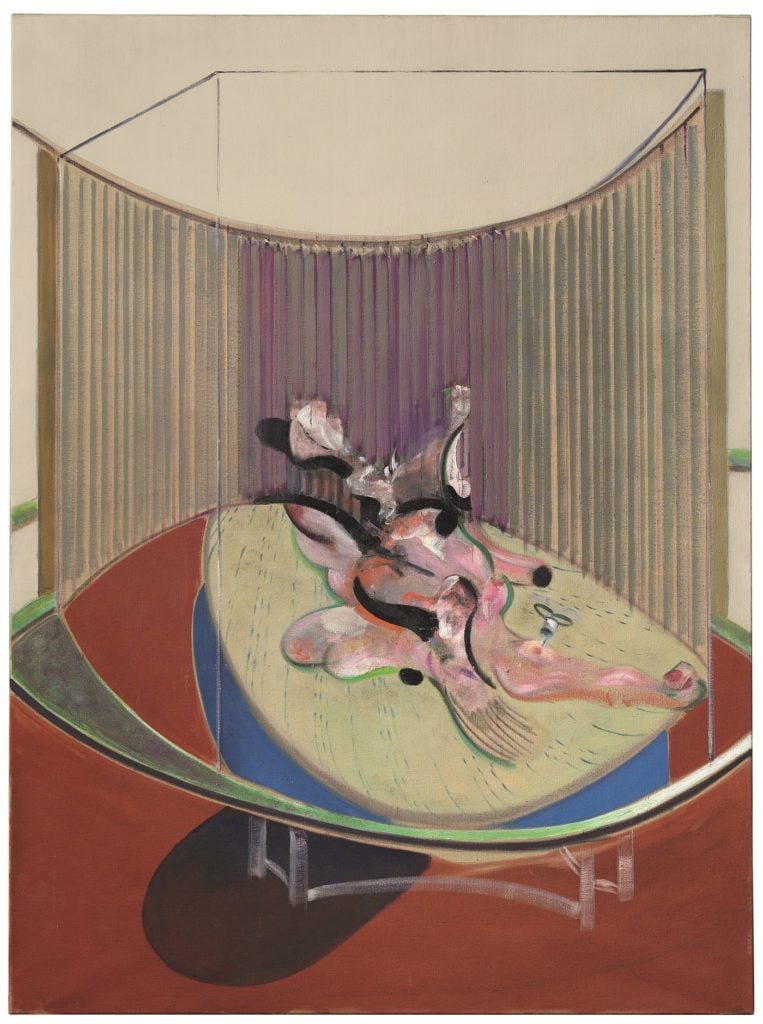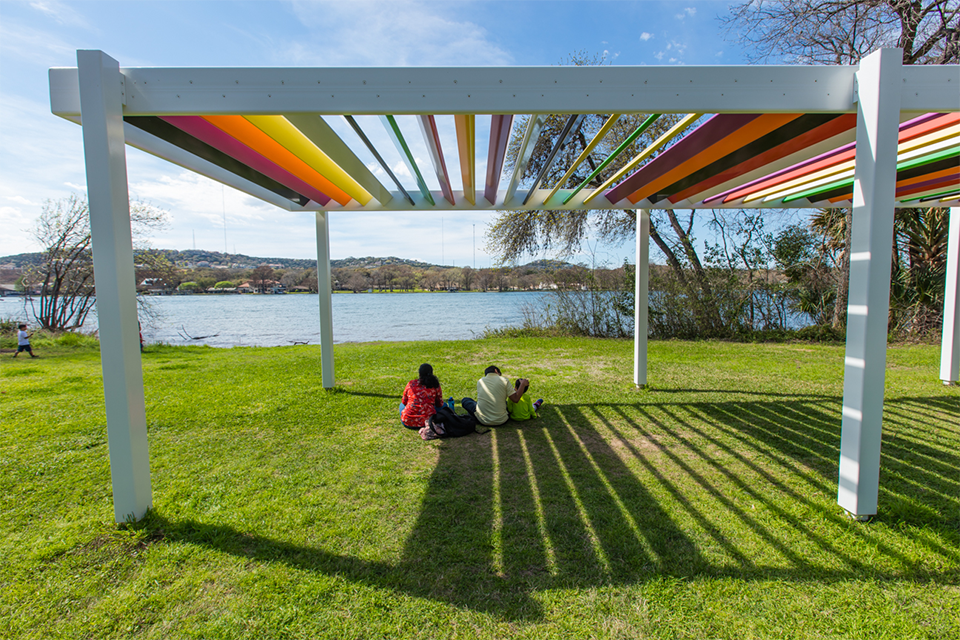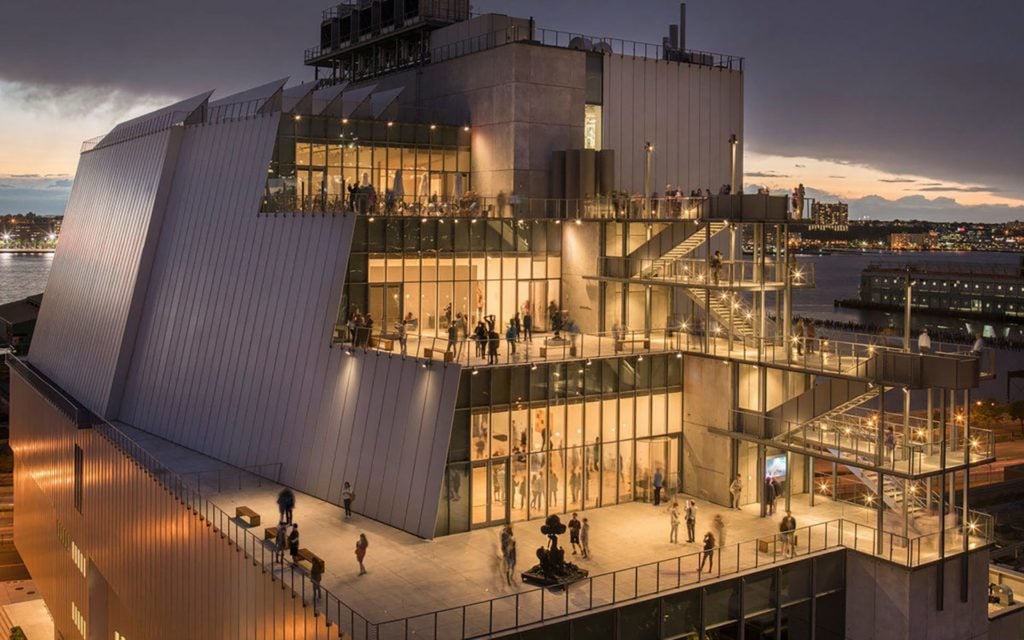Opinion
The Gray Market: Why the Art World Needs a Clear Marker for What the ‘End of the Pandemic’ Means (and Other Insights)
Our columnist explores US medical experts' thinking on how to define when to lift public-health restrictions.

Our columnist explores US medical experts' thinking on how to define when to lift public-health restrictions.

Every Monday morning, Artnet News brings you The Gray Market. The column decodes important stories from the previous week—and offers unparalleled insight into the inner workings of the art industry in the process.
This week, trying to gauge the distance to the finish line…
Last week, a head-on collision between good and bad news led close watchers of the pandemic to investigate whether the US (and perhaps the wider world) has reached the most pivotal intersection in the saga to date… and if so, whether we’re poised to make the right or wrong turn as we cross the border from winter to spring.
But when it comes to projecting the art industry’s timeline for full re-emergence from lockdown, we would be wise to note what several health experts are stressing in unison: the way various constituencies choose to think about the facts on the ground in the coming months will be just as important as the facts themselves.
Let’s cover the good news first. On Tuesday, Alexis Madrigal of the Atlantic relayed some remarkably welcome data on the US’s struggle against COVID-19:
The seven-day average of new cases in the United States has fallen by 74 percent since their January peak, hospitalizations have gone down by 58 percent, and deaths have dropped by 42 percent. Meanwhile, more than 60 million doses of vaccine have gone into American arms.
The problem, as Apoorva Mandavilli reported in the New York Times, is that the decline in cases merely means the country is “still at the horrific highs of November,” when daily data on positive tests, hospitalizations, and deaths confirmed the US was entering a ghastly third wave. Just as sobering, after consulting with an array of doctors and public-health officials, she also warned “there is no guarantee that these rates will continue to decrease.”
The uncertainty largely arises from the virus’s continued mutation. Since coronavirus inoculations first became available to select groups of British and American residents in December, at least five new variants have been detected in, respectively, the UK, Brazil, South Africa, and more recently, California and New York.
However, I want to emphasize this next point, because many members of even the most reputable media outlets have framed it incorrectly: early data suggests the vaccines available in the US are still sufficiently effective against the virus, including the variants discovered abroad. So far, there is no evidence whatsoever that we should believe anything different about their efficacy against the pair of variants uncovered on the American coasts. Even if that changes, the vaccine makers are already hard at work developing boosters targeting the most concerning mutations.
Yet the coronavirus will continue to morph, because that’s what all viruses do. Between this unfortunate fact of virology and the human element, Mandavilli had some unwelcome news.
Taking into account the counterbalancing rises in both vaccinations and variants, along with the high likelihood that people will stop taking precautions, a fourth wave is highly likely this spring, the majority of experts told The Times.
I now invite you to join me in whipping a soft object against a hard surface.
In fairness, Mandavilli’s interviewees emphasized that this outcome is by no means inevitable. Still, the distinct possibility presses a knotty question onto the art world and the wider world alike: What could we use as a clear indicator the pandemic is (finally, mercifully) over?

Francis Bacon, Version No. 2 of Lying Figure with Hypodermic Syringe, 1968. Courtesy Christie’s.
Madrigal’s piece in the Atlantic actually sets out to provide an answer. His reporting leads him to conclude that the US has little chance “in the foreseeable future” of reducing coronavirus transmission to zero. Even when inoculations are available to every American who wants one, the anti-vaxxer contingent appears to be large enough to prevent the US population from reaching genuine herd immunity.
This means government officials and business owners will have to use a less definitive marker to decide when the virus is “sufficiently under control” to lift all pandemic-related restrictions. Among the experts Madrigal surveyed, one option proved especially popular: a sustained upper limit of 100 COVID-19 deaths per day.
Why this metric? According to his reporting, if you run the public-health numbers, 100 deaths per day “approximates the nation’s average death toll from influenza” in “most recent years.” Since the US has tacitly viewed this level of flu risk as adequate for life and business to proceed as usual, it stands to reason the same threshold should be enough to declare COVID-19 contained, too.
The comp makes sense on a number of levels (including that other countries could benchmark off their own corresponding national figures). The flu is itself a coronavirus that long ago became endemic to the population, meaning it will never be fully eradicated. Instead, the virus keeps mutating year after year, which drives the medical industry to formulate a cheap, easily available annual booster shot with a strong chance of protecting recipients from becoming mildly to, yes, fatally infected. Thanks to the US’s disastrous pandemic response in 2020, all of the above will likely be true for the novel coronavirus responsible for COVID-19, too.
The caveat here is, in Madrigal’s words, that “we are nowhere near 100 COVID-19 deaths a day” right now. In fact, by the rolling seven-day averages logged by The Atlantic’s COVID Tracking Project, the lowest daily fatality figure the US has reported since last spring was 474—nearly five times the flu standard. It hasn’t even dipped below 1,000 since November 9.
But before dark visions of another year in sweatpants drive you to the bottom of a bottle, there’s legitimate cause for hope ahead.

The Contemporary Austin’s Betty and Edward Marcus Sculpture Park, Laguna Gloria. Courtesy of the Contemporary Austin.
Here’s the unmitigated burst of sunlight: Mandavilli’s experts “predict that the last surge will subside in the United States sometime in the early summer,” provided the country’s public-health infrastructure can meet president Biden’s pledge to inoculate all willing residents before this autumn. The issue facing the art industry is what its various members will do to endure until then.
As James Tarmy covered on Bloomberg last week, the pandemic has been vastly more painful to US museums and arts nonprofits than to commercial galleries. The main reason for the disparity, he explained, is simple: “Buying art is mostly a private activity; seeing art is much more communal.” His reporting reveals that sales have remained surprisingly robust at multiple levels of the market, from modestly sized dealers like James Fuentes and François Ghebaly to blue-chippers like David Zwirner and Sean Kelly.
As for the rest of the industry, a report from New York comptroller Thomas DiNapoli on Wednesday found that “arts, entertainment, and recreation employment declined by 66 percent” in the city between December 2019 and December 2020—the sharpest drop among any of its economic sectors over that time. A day later, the Otis College of Art and Design’s annual report on California’s “creative economy” delivered the grim news that the state had shed 175,000 arts-aligned jobs, amounting to a 13 percent reduction in employment. (Los Angeles County took an even harder hit, with about one-quarter of its creative workers left unemployed.)
Granted, it’s messy to extract many specifics about our niche industry from these studies, since they mash together data on everything from the visual and performing arts to fashion and spectator sports. But you only get declines as dramatic as these if every member of the group is suffering.

The exterior of the Whitney Museum of American Art. Courtesy the Whitney.
Besides, we have plenty of targeted evidence of the harm done to the arts. The Whitney laid off another 15 staffers last Monday in response to its $23 million budget deficit. The Met has been pilloried for the last two weeks after signaling that it may deaccession works to raise funds to help care for the collection in light of losing $150 million since March 2020.
Further west, the Museum of Contemporary Art Los Angeles announced just before Valentine’s Day that director Klaus Biesenbach would transition into a new role as artistic director, making room for an incoming executive director who could laser-focus on the institution’s monetary and operational challenges. Over the last fiscal year, the museum’s revenue is down more than one-quarter, and its membership is down nearly one-third, per the Los Angeles Times. Also, at the end of January, the Museum of Contemporary Art Chicago cut another 41 jobs (17 full-time, 24 part-time), even after having slashed its budget nearly 30 percent last summer.
In short, apart from the fiefdom of dealers, the coronavirus has ignited a junkyard blaze across the US art landscape. Museums are desperate to return to pre-pandemic attendance levels as soon as possible. Yet they can only do what municipal, state, and federal officials allow them to do, and that guidance has too often been cobbled together based on incoherent analysis and special interests. It hasn’t even been bad in a consistent way; instead, different cities and states have imposed and relaxed wildly different restrictions at wildly different junctures since the crisis began.
All of this means we need political and public-health leaders to land on a clear, sensible metric for declaring the pandemic under control. The flu standard of 100 deaths a day would satisfy those conditions. But even if officials agree, we still likely have months’ worth of ground to cover before we reach that destination—and plenty of arts organizations and arts workers won’t make it that far without additional help.
[The Atlantic | The New York Times]
That’s it for this week. ‘Til next time, remember: no matter where you want to go, bad guidance is often worse than no guidance at all.